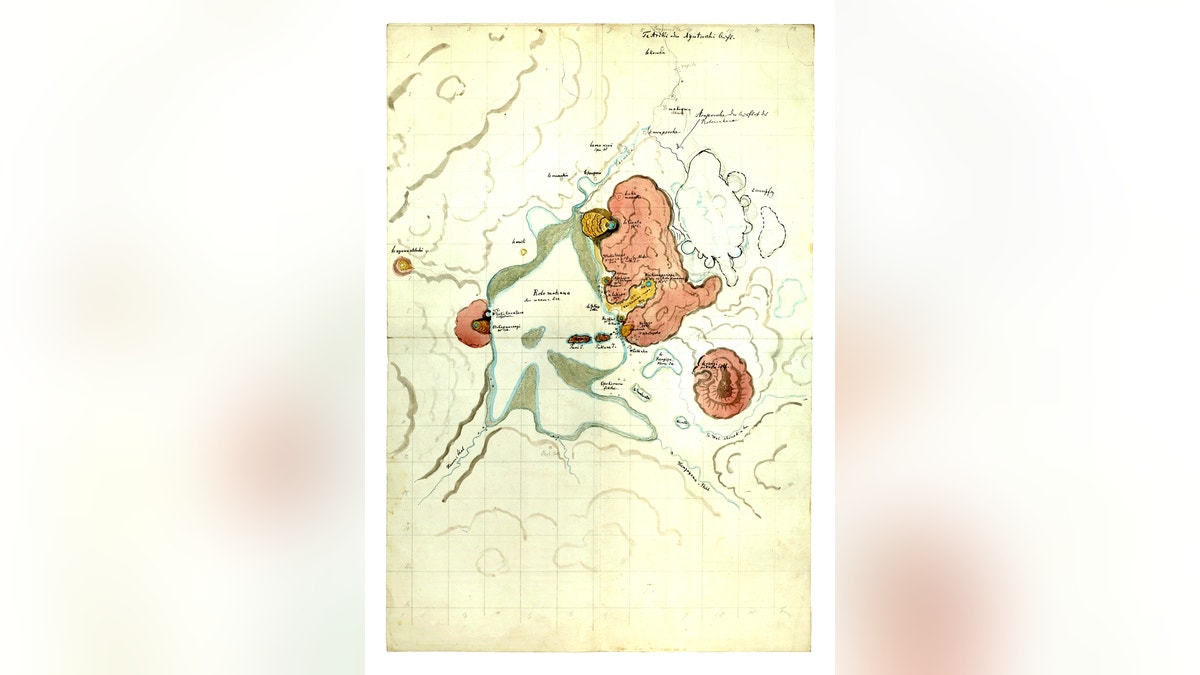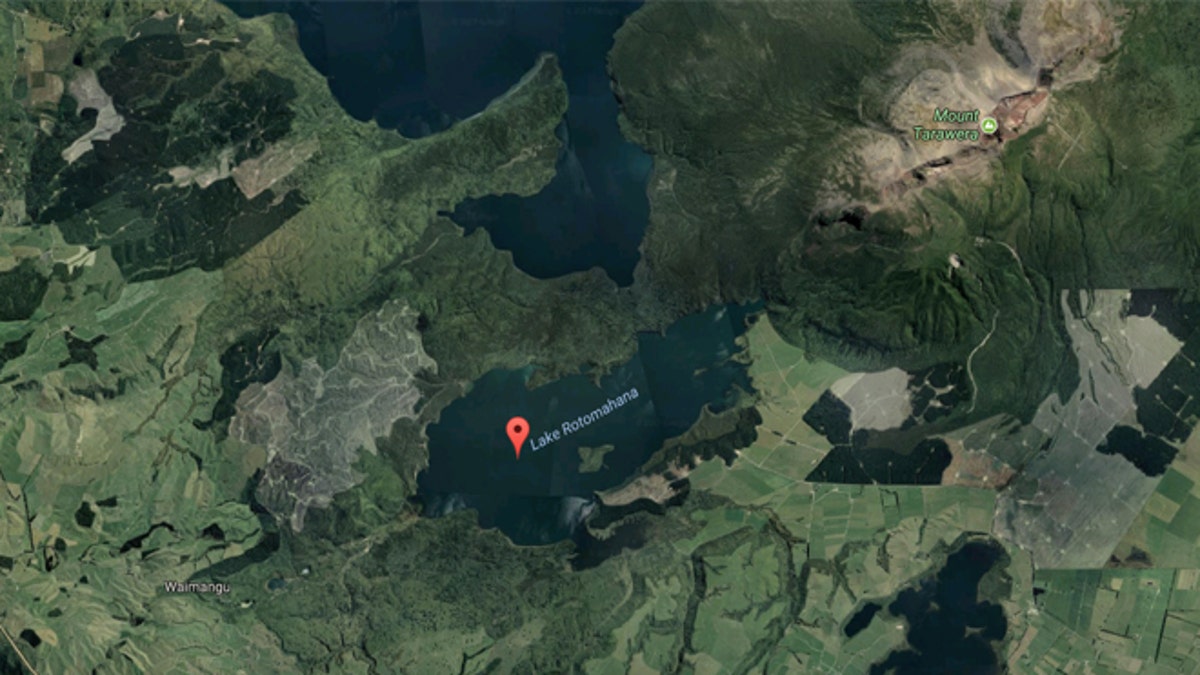
A map made by Hochstetter navigation and georeferencing of this old Lake Rotomahana, around which lay New Zealand's eighth wonder of the world. (Nolden & Nolden 2013 HCB 3.5.10)
Scientists in New Zealand say they have discovered the “Eighth Wonder of the World.” But there is a caveat.
It’s buried under hundreds of pounds of volcanic ash.
Using the forgotten 1859 New Zealand diaries of 19th century geologist Ferdinand von Hochstetter and maps he made during that time period, forensic cartographers Rex Bunn and Sascha Nolden were able to pinpoint the exact location of the famed and elusive pink and white terraces of Lake Rotomahana on New Zealand’s North Island.
“Forensic cartography is described as part science and part art,” the researchers wrote in the introduction to their academic paper.
The terraces, which were the largest deposits on silica on earth, were for years a global attraction – drawing tourists from around the world in the mid-19th century to gawk at the famed pools and bathe in the heated waters of their springs. But in 1886, before the exact location of the springs was properly described and mapped, the nearby Mount Tarawera volcano erupted and buried the terraces under 50 feet of ash and mud.
“They [the terraces] became the greatest tourist attraction in the southern hemisphere and the British Empire, and shiploads of tourists made the dangerous visit down from the U.K., Europe and America to see them,” Bunn told the Guardian last week. “But they were never surveyed by the government of the time, so there was no record of their latitude or longitude.”

A satellite image of Lake Rotomahana. (Google Maps)
The volcanic eruption also vastly altered the surrounding landscape and made it all but impossible for the exact location of the terraces to be marked.
Using von Hochstetter’s field notes – the German-Austrian geologist was the only person to have surveyed the landscape before the 1886 eruption – the Kiwi researchers, however, were able to determine the precise location of the buried terraces.
“Our research relied on the only survey ever made of that part of New Zealand and therefore we are confident the cartography is sound,” Bunn said. “Hochstetter was a very competent cartographer.”
Bunn is now in the process of getting funding to excavate the site of the terraces, which he believes may have only suffered minimal damage from the volcanic ash and could potentially be brought back to their former glory.
“We want to undertake this work in the public interest. And I have been closely liaising with the ancestral owners of the land, the Tuhourangi Tribal Authority, and they are supportive and delighted with the work,” he said.
